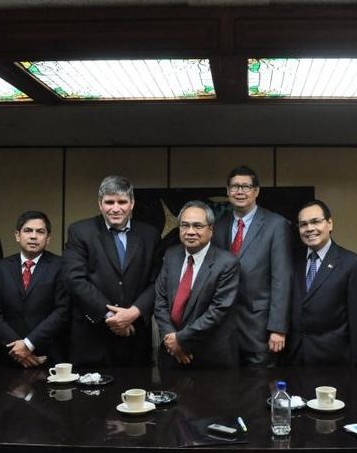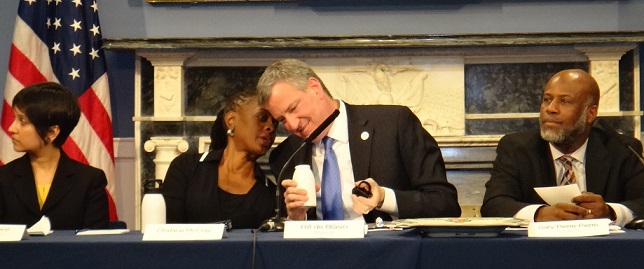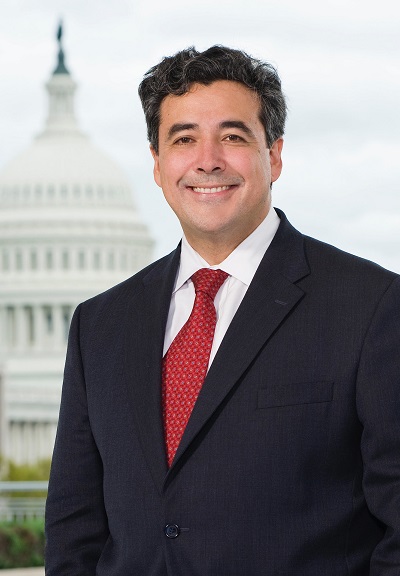Can 4 million FilAms SAVE this bill?
By Cristina DC Pastor
Call it a case of “if at first you don’t succeed…”
The Save Our Industries Act bill is slated to be refiled in the current 112th Congress, after it was snubbed in the last legislative session. The bill proposing to allow the Philippines to import American textiles and export apparel back to the U.S. under a duty-free arrangement did not get past the committee level of either chamber.
“It was not even deliberated upon,” revealed Philippine Board of Investment Vice Chairman Cristino Panlilio, who was in New York this week and spoke to reporters May 19 to drum up publicity for the bill. What he would like to see is for the nearly 5 million FilAms – a “potent force” — to phone their senators and congressmen and urge them to support the bill.
He said some big names in the U.S. fashion and garments industries are already rallying behind the legislation, among them, Ann Taylor, Liz Claiborne, Ralph Lauren and Natori, which is owned by FilAm Josie Natori. He added that boxing legend Manny Pacquiao has agreed to do a promotional roadshow.
The bill, according to him, would revive the Philippines’ outmoded apparel industry, which in its heyday provided jobs to 600,000 Filipinos and accounted for export receipts of about $3 billion. The ailing industry could not quite recover because there is no more textile production to speak of. With two or three mills remaining in the Philippines, according to Panlilio, the country needs to import textiles to sustain the industry. As a result, the industry shed one two-third of jobs and is sputtering at $1 billion receipts. All that’s remained of a large miller called Utex are nostalgic memories of its popular basketball team.
Compared to China, which controls 42 percent of the apparel market in the U.S., the Philippines’ share is only 1 percent. This was pointed out by Rick Helfenbein, USA president of Luenthai, an international apparel distributor that is supporting the SAVE Act bill.
Helfenbein cited history in arguing for the bill’s passage. He said the last time the U.S. and the Philippines had a wide-ranging preferential trade agreement was in 1955, when the Laurel-Langley Act paved the way for Americans to invest in Manila in support of the young republic that was then trying to nationalize its industries.
“The time has come,” he said. “This (bill) is an excellent vehicle.”

From left, Randy Rivera of the Philippine American Chamber of Commerce, Robert Mele, Trade Representative Eugenio Elevado, Cristino Panlilio, and Consul General Mario Lopez de Leon Jr. Photo by Elton Lugay
But it’s not as simple as recalling a shared history and the oft-touted Philippine-American friendship to keep the legislation in motion. There are other Asian countries – among them Bangladesh, Indonesia, Vietnam and Pakistan – that are also competing for their share of the U.S. apparel market currently dominated by China. But like China, they have their own textile manufacturing industries; the Philippines does not.
Panlilio conceded, “It’s very competitive.”
The bill is still undergoing refinements before it will be refiled in the next two weeks by Senator Daniel Inouye and Rep. Jim McDermott of Washington. But a draft of the bill shows which types of textiles would be subject to duty-free treatment. These include:
-fabrics dyed and finished in the U.S. that can be embroidered, stone-washed and screen-printed in the Philippines;
-women’s and girls’ cotton coats;
-infants’ wear;
-cotton and man-made fiber dresses and skirts
The quality of Filipino craftsmanship in sewing, embroidery and patternmaking is among the best in the world, said Robert Mele, vice president for international trade at Ann Taylor. His company has “one large facility” in the Philippines employing hundreds of people who produce suits, dresses and blouses under Ann Taylor’s many labels.
“The Philippines is a key supplier of Ann Taylor products,” he said.
There are many hurdles to this bill, and the China special interest group is just one of them.
One opposition will likely come from American textile mills that have relocated to China or Mexico who could lose market share to Philippine-based mills, although the bill’s backers are predicting 10 percent to 12 percent lower production costs than China if they transferred to the Philippines.
There are also some cotton merchants who have extensive business arrangements with Chinese mills who would be leery of seeing market share go down at a time when world business conditions are tough. Many of these mills and trading houses are based in the U.S. cotton belt states, from Virginia in the east through Texas and all the way out California. Texas, the biggest cotton growing state, accounts for nearly half of all U.S. cotton acreage estimated by the government at 12.5 million acres.
The fact that the SAVE Act bill did not even make it out of committee indicates how strong the opponents are.
Check out the SAVE Act Facebook page at https://www.facebook.com/SaveAct.
 Cristina DC Pastor is the founding editor of The FilAm. She is a Business and Economics Reporting Fellow at Feet in Two Worlds.
Cristina DC Pastor is the founding editor of The FilAm. She is a Business and Economics Reporting Fellow at Feet in Two Worlds.













It will be useful if you can provide links to the members of Congress that readers can click providing information on how to contact them, or better yet to simply click on a link to a letter that will go to the members of Congress concerned. I think the easier it is for readers to show their support, the better for the campaign. You may just get all 4 million FilAms to cause the passage of the bill!
Thanks Bella for the comments. I think they’re still finalizing those details, but they have a Facebook page: https://www.facebook.com/SaveAct.
I will add the link to the article.
Cristina
Thank you, Cristina.
Hey, good to find someone who agrees with me.
I am adding this RSS to my e-mail and could look out for a lot more of your intriguing content.